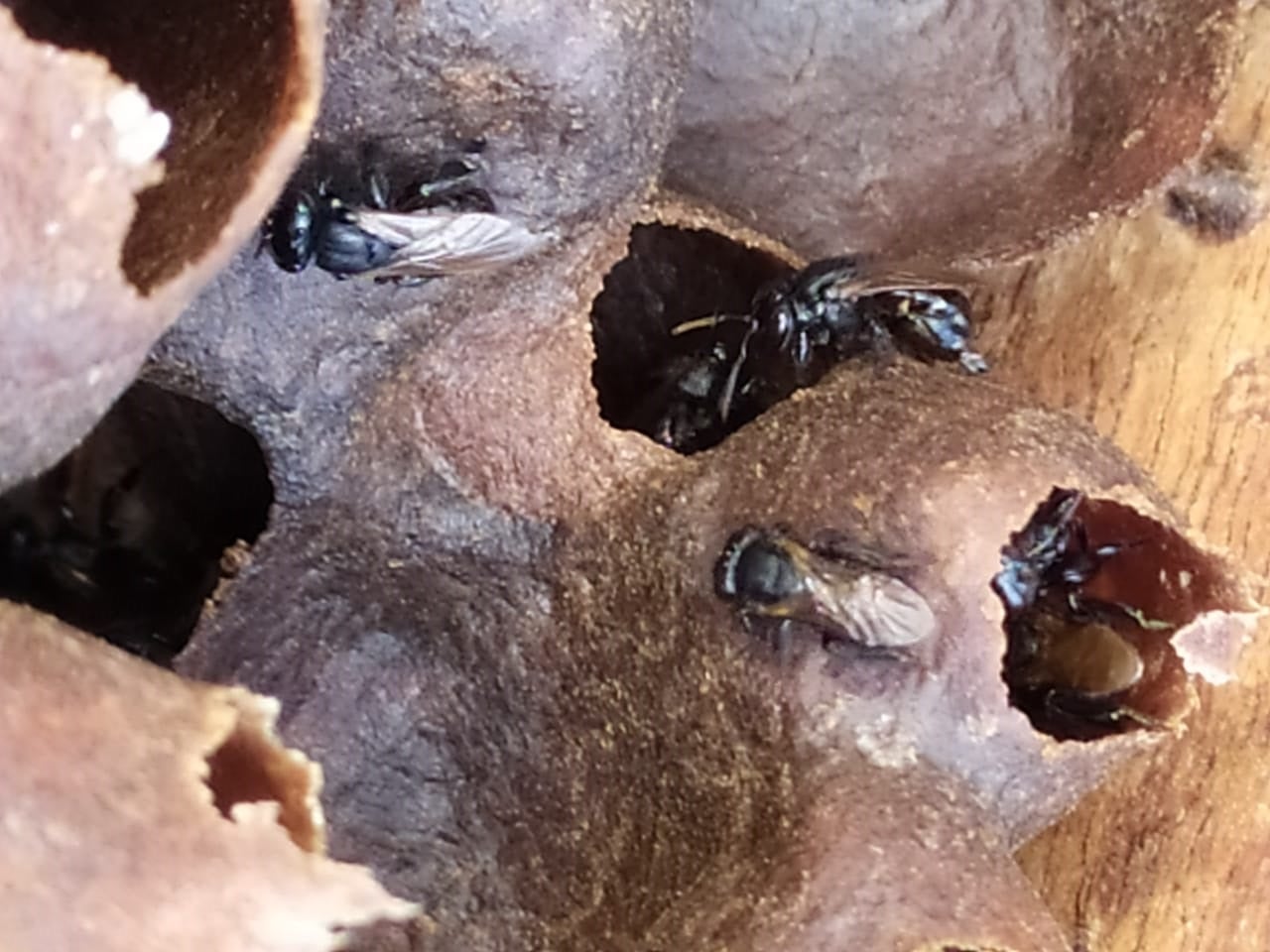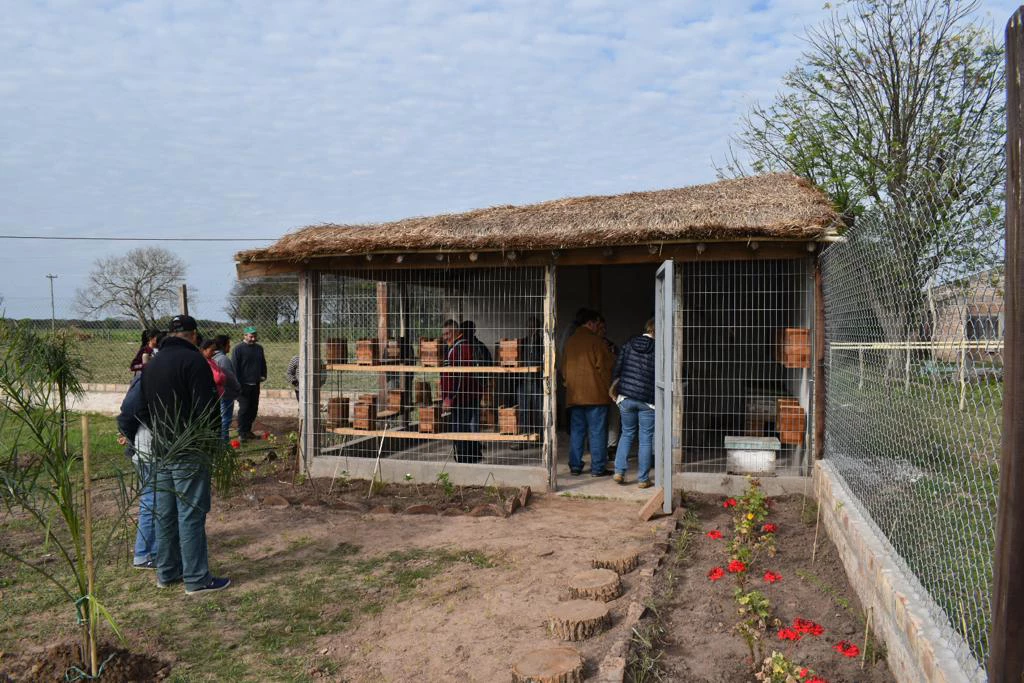 Bees - Argentina
Bees - Argentina
In the Argentine Chaco forest, the indigenous and creole peoples of Pampa del Indio work together to produce honey from the “melipona bees,” which are native stingless bees (Tetragonisca fiebrigi and Scaptotrigona jujuyensis). In a recent blog, we explain how this zone has become a sanctuary for the production of honey by native species.
In this edition, we are going to give you more details on how this innovative project is showcasing the conservation of the melipona bees by combining the use of technology and scientific knowledge with ancestral wisdom to implement sustainable production practices .
Upon entering the “impenetrable” forests, as the Chaco forests are called, it is not unusual to find “wild honey’’ trees, with holes in the trunks where the stingless bees establish their colonies and produce honey.
Meliponiculture is not new to the Chaco region. The practice of “meleo” [honey harvesting] is common among creole and indigenous inhabitants.
However, the novelty with the initiative Impulso a la Meliponicultura [Meliponiculture Thrust], which forms part of the Corredores Rurales y Biodiversidad [Rural Corridors and Biodiversity Conservation] project, financed by the Global Environment Facility (GEF) and executed by the Administración de Parques Nacionales de Argentina [Argentina National Parks Administration], is that swarm removal is replaced with the recovery of nests, which otherwise would end up being processed in sawmills or carpentry shops.
What was previously processed directly in the forests, is now being produced without great infrastructural requirements, and in urban areas. Small, compact crates are used, which are easy to transport and take up little space. This technology was designed by the Instituto Nacional de Tecnología Agropecuaria [National Institute of Agricultural Technology] after several years of research.
Ancestral knowledge plus innovation
Indigenous inhabitants of Qom ethnicity have ancestral knowledge about biology and the management of melipona bees, as well as the medicinal uses and properties of their honey. The value of this knowledge is recognized through an intercultural pedagogical project for the preservation of traditional wisdom and through the sharing of the initiative with local residents and inhabitants.
A powerful approach in the project is cooperation between creole and indigenous peoples. Cooperative communities, with resilient socio-productive systems have greater capacity to respond and adapt to environmental and climate-related challenges.
This scheme helps to conserve nature and mitigate climate change, while increasing the value of the forests, which are the habitat of the bees, and this helps prevent deforestation. In addition, the development of meliponiculture strengthens food sovereignty, which is the right that peoples have to choose what to produce and to consume; it creates identity, since it boosts the production systems that form part of the cultural heritage; and promotes a sense of belonging and attachment to the territories.
Sweet, bittersweet, that heals and nurtures
Honey from native stingless bees is nutritional and healing. There are over 400 different uses for the honeys from the melipona bees, ranging from the treatment of skin infections or in the respiratory system to the cure of cataracts. In Indonesia, the anti-cancer properties of propolis (pollen) are being studied, and in Mexico, honey and its by-products are sold for food consumption as well as for cosmetic purposes. Melipona bees produce a honey that is different from the traditional one. Its taste is bittersweet, with higher humidity levels and more nutritional and healing properties than the honey from the common bee. Melipona bees use nectar from plants that are different from those used by common bees and they add royal jelly to the honey during the process of making food for young bees.
Meliponiculture has a low production cost, which makes it an ideal alternative for household income. Melipona bees do not need as much management as common bees: there is no need to change wax, or to repair suits, or buy smokers, and the meliponary can be kept near the home, in urban areas.
Notwithstanding this advantage, honey production is slow and low volume. To produce a liter of Yateí honey, a colony of 5,000 bees has to work for a whole year. This product is therefore sold at a higher price than common honey.
This project offers a prototype for scaled production: it seeks to increase the production of honey and to access new markets. The recent incorporation of this product into the Codex Alimentarius in Argentina facilitates this prospect and opens up new opportunities for its commercialization.
Honeys to be conserved
The loss of biodiversity is not only an environmental problem, but a development, economic, security, social, and moral one. The only way to reduce pressure on the ecosystems is to generate sustainable economic alternatives that promote and revalue nature’s environmental services.
The “Impulso a la Meliponicultura’’ initiative contributes to the preservation of the Chaco forests, which are under severe threat from the advancing agricultural frontier, as well as to the wellbeing of its people, who, since the transformation of the landscape, have lost opportunities for their sustenance and development. It also contributes to the reclaiming of its inhabitants’ socio-cultural identity.
This initiative will be discussed during the event: Invest in Nature: Uncovering the Hidden Value of Biodiversity, as part of the Annual Meetings 2019 in Washington DC.




Join the Conversation